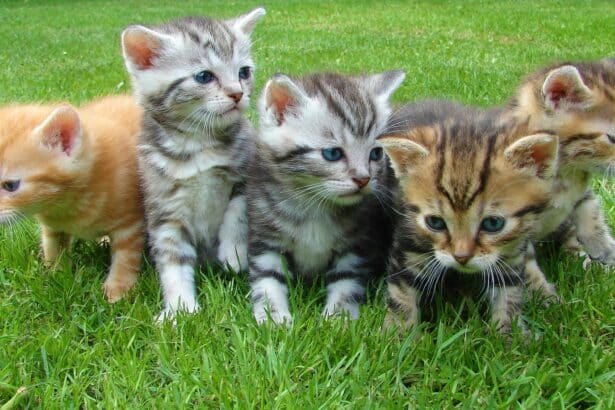Understanding your cat’s grooming needs
Why do cats need regular grooming?
Grooming is an essential part of your cat’s health. It’s not a luxury, but a necessity. It goes far beyond keeping your feline looking neat and tidy, and touches on issues of health and well-being. Grooming serves several purposes – it helps prevent the formation of painful and uncomfortable knots, helps keep him clean by removing dirt and debris from his coat, and can also be used to check for the presence of parasites such as fleas or ticks. What’s more, especially for long-haired cats, regular grooming with brushing removes dead hairs and reduces their ingestion during licking, which can reduce hairball problems.
- Understanding your cat’s grooming needs
- Feline Grooming Essentials
- The Best Grooming Techniques for Your Cat
- How to brush your cat effectively
- Tips for trimming your cat’s claws
- The art of cat bathing: myths and realities
- Preventing Common Grooming Problems in Cats
- Creating a bond with your cat through grooming
Grooming differences between long-haired and short-haired cats
Your cat’s coat type will greatly influence its grooming needs. Long-haired cats will need frequent, sometimes daily, grooming to avoid tangles and knots. If not treated quickly, these can lead to skin problems such as irritation and even infection. The task of toielttage is a little easier for shorthaired cats. Their short coats are less likely to tangle, but that’s no reason to neglect their grooming. They also enjoy the benefits of regular brushing – brushing helps distribute healthy oils throughout their coat, keeps their fur in good condition and also reduces the amount of hair ingested during licking.
Feline Grooming Essentials
Essential grooming tools
Good grooming requires the right tools. This includes a basic set containing a good quality comb and brush. These two tools will help you detangle your cat’s hair, give it a beautiful, smooth coat and reduce the amount of dead hair. Nail clippers are also useful for keeping claws at the right length and preventing injury. Finally, a mild shampoo specially designed for cats is needed for those rare occasions when a bath is necessary. These tools form the basic kit, but many other specialized grooming tools can also make grooming tasks easier, such as close-toothed combs for flea control or toothbrushes to encourage oral hygiene.
How do you set up a grooming routine?
Regular grooming is less stressful for your cat than long, tedious episodic sessions. The key to an effective grooming routine is regularity and predictability. Choose a time that suits you and your cat – when you’re both calm and relaxed. This could be after a nap or a play session, for example. Create a soothing environment, with soft music, for example. Start slowly, gradually increasing the length of your grooming sessions. End each session by rewarding your cat with treats or petting to associate it with a positive experience.
The Best Grooming Techniques for Your Cat
How to brush your cat effectively
Brushing is an essential part of grooming. This is particularly true for long-haired cats, but even short-haired cats can benefit greatly from regular brushing. It’s important to take your time and work carefully and gently. Always start by gently brushing the head and tail, areas where cats tend to be more sensitive. Then work slowly towards the body. Make sure you use the right brush for your cat’s coat type to remove as much dead hair as possible. Regular brushing reduces knot formation, minimizes hair in the house and reduces hair ingestion during licking.
Tips for trimming your cat’s claws
Trimming a cat’s nails can be a tricky business. If you feel uncomfortable, you can always call in a vet or professional groomer. However, with the right tool, a little patience and practice, you can learn to do it at home. It’s best to try trimming your cat’s nails when she’s relaxed and calm. You may need the help of another person to hold the cat, especially the first few times. Make sure you don’t cut too close to the vein, which could cause bleeding. If your cat seems particularly anxious or resistant, take a break and try again.
The art of cat bathing: myths and realities
Cats are particularly clean animals who spend a lot of time grooming themselves. So, contrary to what some might think, cats don’t need frequent baths. In fact, bathing can be harmful to their skin, as it eliminates the essential oils naturally present. Besides, cats don’t generally like water, and a bath could be a source of stress for them. A bath is therefore generally reserved for situations where the cat is exceptionally dirty or if recommended by a veterinarian for special medical reasons.
Preventing Common Grooming Problems in Cats
How to deal with hairballs
Especially in long-haired cats, hairballs can be a common problem. When cats groom themselves, they ingest hair that can become compacted in their digestive system, forming so-called hairballs. This can cause discomfort, indigestion and, in some cases, veterinary treatment. Regular brushing can help reduce the amount of hair ingested and thus the formation of hairballs. There are also special cat foods that can help facilitate the natural expulsion of hairballs.
How to prevent dental problems in cats
Dental health is a crucial part of a cat’s grooming and general hygiene. Poor dental health can seriously affect your cat’s quality of life. This can lead to pain, eating problems and even more serious health problems such as infections. Unfortunately, dental health is often neglected by cat owners. Regularly brushing your cat’s teeth at home and providing a proper diet can help prevent cavities, tartar and other dental problems.
Creating a bond with your cat through grooming
As well as keeping your cat healthy and comfortable, grooming is also a great way to strengthen your bond with him. It’s an opportunity to spend quality time with your cat, petting him and making him feel that he has your undivided attention. Making grooming a positive experience for both of you will help you develop mutual trust and affection. This can make grooming a moment you and your cat look forward to. In conclusion, it’s clear that grooming is an important activity for your cat’s physical and emotional well-being, not to mention the many benefits for the owner.






